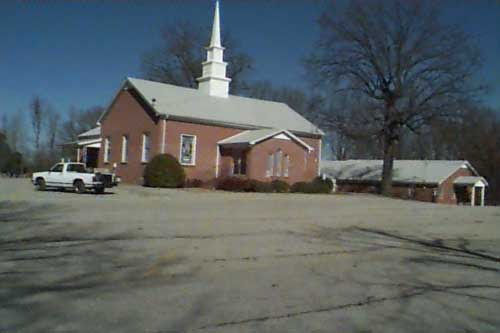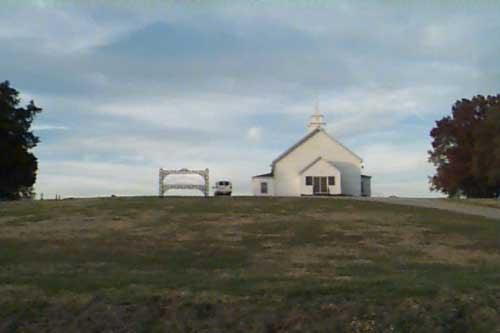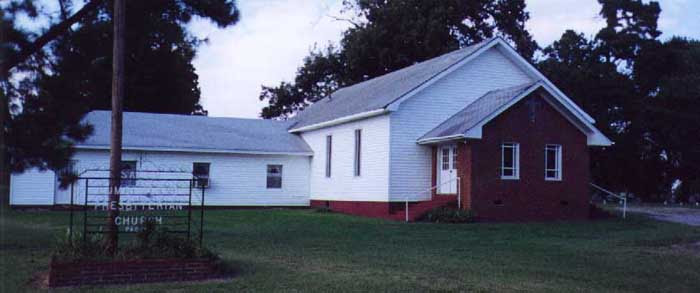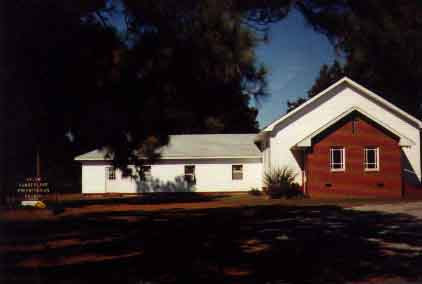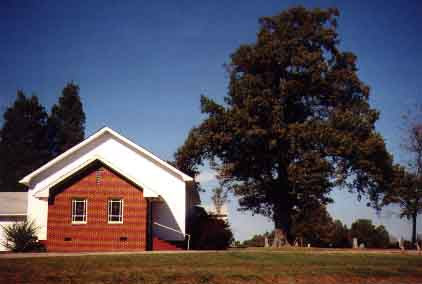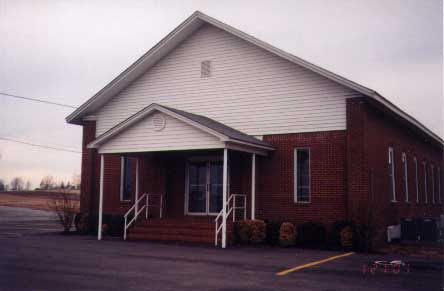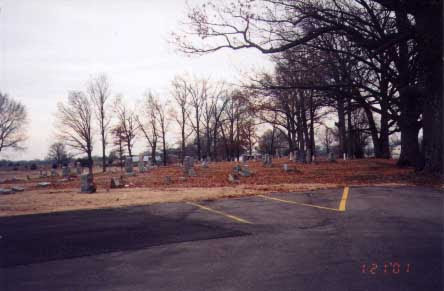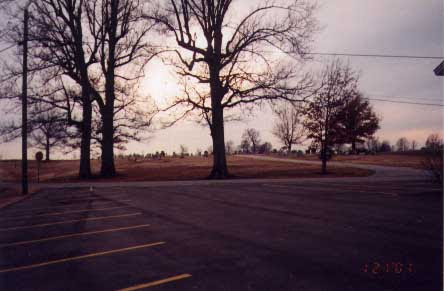The following is from The Goodspeed History of Tennessee, Crockett County, published by the Goodspeed Publishing Co., 1887.
Up to 1825, the territory within the limits of what is now Crockett County, contained not a single religious organization or church building. At about that time, however, the circuit rider of the Jackson Methodist Circuit was induced to make appointments, and hold services once every four weeks at the house of Henry A. Powell, a member of the Methodist Church, who lived near where now stands Maury City. These were, probably, the first religious meetings held in the county. After the crops had been gathered in the fall of 1830, eight or ten farmers living in the neighborhood of what is now Johnsonís Grove, went to work and erected the first regular meeting house in the county. The building stood half a mile east from Johnsonís Grove, and was a small pole cabin, the logs scalped down inside and out, and the cracks lined on the inside with oak boards. The floor was of puncheons, and the seats were made by splitting open poplar logs, hewing the face smooth with a broad-ax, and were supported by stout oaken legs. The pulpit was an oblong frame arrangement, weather-boarded to the proper height, with drawn oak boards, on top of which, supported by four posts, was a broad board for a book rest. The church was given the name of Old Liberty, and was used by all denominations. A singular fact in connection with this first church was, that it was built by men none of whom were members of any church. In the latter part of the same year, the farmers in the neighborhood of what is now Maury City, built a similar log meeting-house on the site of that village, and gave it the name of Palmyra. In the summer of 1831, Capt. Porter, one of the early settlers of the Lanefield neighborhood, and an enthusiastic Methodist, conceived the idea of holding a camp-meeting , and the following fall Palmyra Campground was established at the church of that name, and a camp-meeting held. The meeting continued for a week, the people camping in tents and improvised shanties, and upward of 100 conversions were made. The result of the meeting worked quite a religious revolution over the entire Forked Deer River country, and from that time on, churches were established in all sections of the county. The Methodists, within the next few years, erected in different locations, the following churches, all of which were built on the same plan as Old Liberty: Pond Creek, Poplar Grove, Mount Zion, Elizabeth, Holly Grove and Cross Roads.
Churches of other denominations were erected during the succeeding four or five years as follows: Between 1835 and 1840, the Missionary Baptists organized and erected Shady Grove, Dyer, Mill Creek and Quincy, while the Cumberland Presbyterians erected Bethesda in about 1838, and Salem in about 1850. In about 1847 the Christians, or Campbellites, effected an organization and held regular services at Old Liberty, and in 1850 built a church at Chestnut Bluff. At about the same time the Christians built Miller Chapel, and later on built churches at Alamo and Bellís Depot. In 1882 the Gadsden Christian Church was erected, and in 1883 Crockett Mills Church, of the same denomination, was built, the expenses of which was borne entirely by Mr. J. F. Robertson, of Crockett Mills. In 1867-68 the Northern Methodists began organizing in the county, and soon afterward erected a church at Cairo, Siloam Church, in the Thirteenth District, and Dunlapís Chapel in the Third District.
The churches of the present, outside of the towns, are as follows: First District, Walnut Hill, Missionary Baptist; Second District, Bethel Missionary Baptist and Masonís Grove, Methodist Episcopal South; Third District, Dunlapís Chapel, Northern Methodist; Fourth District, Salem, Cumberland Presbyterian, Coxís Chapel, Christian and Center, Methodist Episcopal South; Sixth District, Mill Creek, Primitive Baptists; Seventh District, Quincy, Methodist Episcopal South and Quincy, Missionary Baptist; Eight District, Pond Creek, Methodist Episcopal South; Ninth District, Bethesda, Cumberland Presbyterian, Providence, Missionary Baptist and Crockett Mills, Christian; Eleventh District, Floydís Chapel, Methodist Episcopal South, and Dyer, Primitive Baptist; Twelfth District, Elizabeth, Methodist Episcopal South, Mount Moriah, Missionary Baptist and Mount Zion, Methodist Episcopal South; Thirteenth District, Lebanon, Methodist Episcopal South, and South Fork, Union Baptist. Fourteenth District, Lanefield, Methodist Episcopal South, Johnsonís Grove, Missionary Baptists and Johnsonís Grove, Christian.
